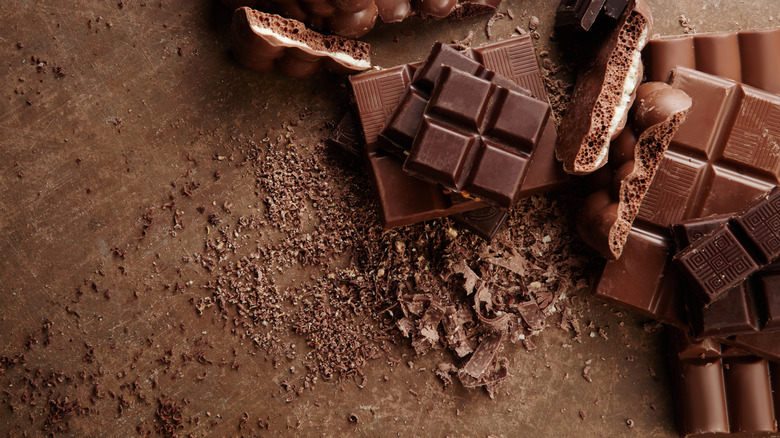The Main Chocolate Rule Wolfgang Puck Lives By
Wolfgang Puck values quality. In an interview with Harper's BAZAAR, he shares that he starts every day with hand-grinded Ethiopian coffee. And while his favorite "simple" lunch of grilled salmon with homemade vinaigrette is a bit more complex than what the average home cook may prepare, there is one culinary pleasure he and low-key diners can probably agree on: chocolate.
"There are people who are workaholics. I'm a chocoholic," Puck tells the outlet, and we get it. As data from Euromonitor, via CNBC, reveals, U.S. chocolate fans enjoy roughly 9.5 pounds of the stuff per person per year. But while it may be a fun, exciting treat, quality counts, and it affects the way your chocolate tastes.
Luckily, Puck, who has rules for cooking the perfect steak and differentiating between 2 and 3 Michelin-star restaurant ratings, has a tried-and-true rule for assessing what he calls "the perfect snack."
Wolfgang Puck claims 65 is the magic number
When Wolfgang Puck enjoys a little chocolate, he doesn't make a special trip to a master chocolatier – he reads the label on the packaging. "For me, there is only one chocolate. It is dark chocolate," the chef tells Harper's BAZAAR. Specifically, Puck requires his dark chocolate to be at least 65% cacao or higher. According to Puck, he even turned his son Oliver onto the rule (As a young boy, he was known to ask Della, the pastry chef at Puck's flagship restaurant Spago, "Della, is that 65%?")
On a label, the percentage refers to how much of the chocolate by weight comes from cacao solids. The FDA minimum requirements for chocolate are at least 35% cacao and fewer than 12% milk solids. Not only do these figures indicate how much of your chocolate bar is "actually" chocolate and not raw sugar or some kind of filler, but it also gives cues to the flavor of the chocolate. The lower the percentage of cacao beans, the sweeter the treat will be; Higher percentages indicate more beans and, by extension, more bitterness. It's a more accurate, consistent descriptor than labels like "bittersweet" or "semisweet."
As an added bonus for snacking chocolate fans, higher percentages also make for a healthier choice.

